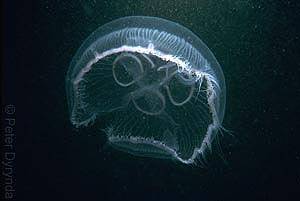Moon Jelly
(Aurelia aurita)
By Andrew Bishop
and
James B. Wood and Abel Valdivia (Eds)
and
James B. Wood and Abel Valdivia (Eds)
|
Moon Jelly
(Aurelia aurita)
By Andrew Bishop
and James B. Wood and Abel Valdivia (Eds) |
